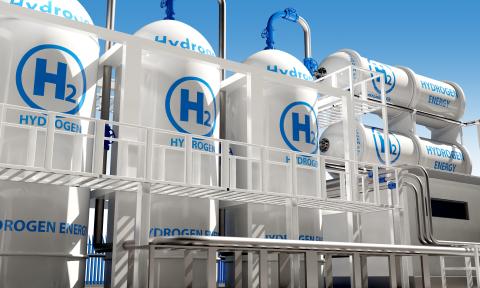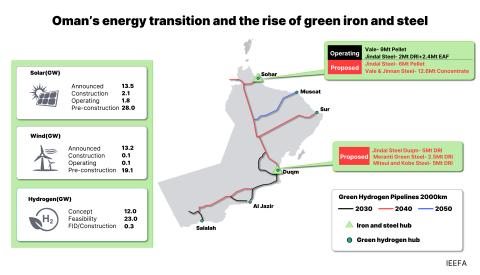IEEFA U.S.: New Mexico pushes plan to pivot from heavy dependence on oil and gas industry
New Mexico has announced a major realignment of its economic development program that calls for reducing reliance on oil and gas production. One of its six major goals is to shift the economy from its dependence on just a few key industries, including government, retail, and oil and gas. The plan represents an important and necessary shift in the state’s economic development strategy.
IEEFA produced a report in October 2020 on New Mexico’s risky reliance on oil revenue, warning that unprecedented changes in energy markets threaten the state’s fiscal health. The report noted that oil and gas revenues had accounted for as much as 30 percent of the state’s revenues over the past dozen years. IEEA noted the oil industry is in the midst of a long-term financial decline that transcends its usual boom-and-bust volatility. It urged state policymakers to grapple with the new reality and develop a robust response to protect New Mexico’s fiscal health.
Oil prices plummeted to negative numbers in the spring of 2020, then eventually climbed up to the current profitable range of $80/barrel. The climb, however, does not make the industry a stable source of revenue. High prices worked for the oil companies only because they had no meaningful competition. Today, high oil and gas prices are creating strong incentives for the expansion of electric vehicles, as well as increasingly competitive wind and solar energy.
The department urges the creation of a more diversified economy.
Financial strength in the oil industry requires not only a price of at least $80 per barrel for several years but also fiscal stability of state-owned oil enterprises and access to rising oil demand unfettered by competitors. That is not a likely scenario—and renewable energy sources already threaten to encroach more on oil’s previously exclusive market. The U.S. Energy Information Administration also recently said it expects oil prices to decline in 2022.
The New Mexico Economic Development Department makes clear, no-nonsense statements about why the state needs to pivot from its over-dependence on oil and gas for revenue. It noted:
“Oil and natural gas extraction is a volatile industry and the economic benefit from these reserves fluctuate greatly depending on geopolitical factors and national demand. Environmental concerns – especially around water and climate change, make extractive industries controversial despite their importance to the state economy.”
The department said although it expects oil and gas to continue to play an important role, the state’s heavy reliance on fossil fuel extraction has led to an easily disrupted economy:
“New Mexico’s lack of industrial diversification has resulted in volatile economic cycles in which employment and the state’s ability to fund public services are highly dependent on oil and gas prices as well as federal policy decisions.”
The department warned that change is coming in the energy sector, and New Mexico needs to prepare for it now. It urged:
“In the long run, as the world transitions from fossil fuel to renewable energy, the need for New Mexico to develop new drivers of economic growth will become ever more urgent.”
The plan identified specific regional vulnerabilities from fossil fuel dependence as well. It noted, for example, that the San Juan Basin has been a strong source of oil and gas revenues and has significant reserves but now requires more expensive and advanced drilling methods to extract the remaining resources.
The economic development plan articulated goals to expand the state’s economy, stabilize long-term public revenues and create greater opportunities for its residents. To achieve its goals, the department urges the creation of a more diversified economy.
The state recognizes that New Mexico’s economy has already begun to move away from its dependence on government employment, mining and drilling. It noted growth in health, education, and professional and business services—but said it’s not enough to meet the economic or employment needs of the state.
The department called for a special focus on the development of nine industries it deems to have “strong growth potential and high private sector wages” by coordinating planning, educational opportunities, housing and transportation infrastructure development, and business incentives. The industries it identified are aerospace, biosciences, cybersecurity, film and television, outdoor recreation, sustainable and value-added agriculture, intelligent manufacturing (e.g., production of semiconductors or electronic components), global trade (storage, transport, and shipping across its international border), and sustainable and green energy.
The plan emphasized the need to support job transition:
“As the state seeks to diversify away from oil and gas, it must offer channels through which oil industry workers can transfer their skills to new industries, such as manufacturing or renewable energy, while providing retraining and upskilling programs to help workers transition to the high-tech industries that the state seeks to develop.”
New Mexico faces both challenges and opportunities as the world changes
The plan expresses optimism about the job-creation potential of the nine target industries. It noted that from 2010 to 2020, the aerospace industry generated almost half of all new jobs in the state (roughly 4,000), followed by cybersecurity (about 2,500), which the report identified as the state’s fastest -growing target industry. Sustainable and green energy took third place, producing roughly 1,600 jobs, with the majority in downstream, consumer-facing industries such as electrical and wiring installation contractors and plumbing, heating and air-conditioning contractors. It pointed out that New Mexico has “immense solar energy potential” because of its sunny weather, and wind energy generation is expected to grow.
But the department identified a fundamental mismatch. The skills most employers are seeking do not match the skills of most workers. It found that New Mexico’s existing workforce is well-suited to fill jobs in aerospace, outdoor recreation, and sustainable and value-added agriculture, but more intensive education is needed to prepare workers for jobs in cybersecurity, intelligent manufacturing, and sustainable and green energy.
The plan recommended strengthening programs to develop science, technology, engineering, and math (STEM) skills. It emphasized that education should include certificate programs designed with “buy-in from industry partners,” in addition to traditional two- or four-year degrees. It cited the success of the North American Wind Research and Training Center at Mesalands Community College in Tucumcari.
The plan also cited a hydrogen industry program at San Juan College—a partnership with Bayotech—to develop a post-graduate certificate in hydrogen industry skills and expressed hope that the state can lead in the production of blue hydrogen from natural gas. Blue hydrogen is a more controversial area of energy development, since it prolongs the extraction of fossil fuel. The state will need to consider the potential for methane leaks and the weaknesses of carbon capture technology.
One important caveat is the need to ensure robust public participation and responsible environmental planning in the development of new industrial endeavors. The plan called for “regulatory reform,” which can be helpful but often is a cover for attempts to weaken pollution controls and curb transparent public review of projects. That would be a recipe for failure.
New Mexico faces both challenges and opportunities as the world changes. It has taken an important step by declaring the need for change and identifying potential strategies to address it. The state will need to use resources generated by current high oil prices and available federal funds to deliver on its commitments. By realigning its economic development policy to diversify its economic base and pivot from overreliance on oil and gas production, New Mexico can chart a path toward economic stability.
Suzanne Mattei ([email protected]) is an IEEFA energy policy analyst.
Related items:
IEEFA. New Mexico’s Risky Reliance on Oil Revenue Must Change.
IEEFA. Deep in the Heart of Texas, Oil and Gas Losing Economic Luster.















